พ่อขุนรามคำแหงมหาราช
พ่อขุนรามคำแหงมหาราช ได้ทรงเล่าพระราชประวัติของพระองค์ด้วยพระองค์เองงว่า “พ่อกูชื่อศรีอินทราทิตย์ แม่กูชื่อนางเสือง พี่กูชื่อบานเมือง กูมีพี่น้องท้องเดียวกันห้าคน ผู้ชายสามผู้หญิงโสง พี่เผื่อผู้อ้ายตายจากเผือ เตียม แต่ยังเล็ก...” ข้อความดังกล่าวไม่ระบุว่าทรงพระราชสมภพเมื่อใด นักประวัติศาสตร์ได้สันนิษฐานว่า พระองค์พระราชสมภาพประมาณปีจอ จุลศักราช ๖๐๐ (พ.ศ. ๑๗๘๑) หรือปีกุล จุลศักราช ๖๐๑ (พ.ศ. ๑๗๘๒) เพราะตามพงศาวดารเมืองเหนือ เช่น พงศาวดารโยนกกล่าวว่า พ่อขุนรามคำแหงมหาราชเป็นพระสหายรุ่นราวคราวเดียวกับ พ่อขุนมังราย เจ้าเมืองเชียงใหม่และพ่อขุนงำเมือง เจ้าเมืองพะเยา และเป็นศิษย์ร่วมอาจารย์เดียวกัน คือทรงศึกษาอยู่ในสำนักสุกกทันตฤษี ณ เมืองละโว้ (ลพบุรี) พงศาวดารและจดหมายเหตุเมืองเหนือระบุว่า พ่อขุนมังรายสมภาพในปีกุน จุลศักราช ๖๐๑ (พ.ศ. ๑๗๘๒) และพ่อขุนงำเมืองสมภพในปีจอจุลศักราช ๖๐๐ (พ.ศ. ๑๗๘๑)
พ่อขุนรามคำแหงมหาราช ทรงมีพระนามเดิมว่าขุนรามราช เมื่อทรงพระชนมายุได้ ๑๙ ปี ได้ช่วยพระราชบิดาออกสู้รบในการสงครามกับขุนสามชน เจ้าเมืองฉอด ซึ่งยกทัพมาตีเมืองตาก ทรงเป็นนักรบที่เข้มแข็งสามารถเข้าชนช้างชนะขุนสามชนพวกเมืองฉอดจึงแตกพ่ายไป พ่อขุนศรีอินทราทิตย์จึงให้พระนามแก่ขุนรามราช “พระรามคำแหง” ซึ่งหมายความว่า “พระรามผู้เข้มแข็ง” หรือ “เจ้ารามผู้เข้มแข็ง” ดังข้อความความในตอนหนึ่งในศิลาจารึกหลักที่ ๑ ที่ว่า “...เมื่อกูขึ้นใหญ่ได้สิบเก้าเข้า ขุนสามชนเจ้าเมืองฉอดมาที่เมืองตาก พ่อกูไปรบ ขุนสามชนหัวซ้าย ขุนสามชนขับมาหัวขวา ขุนสามชนเกลื่อนเข้าไพร่ฟ้าหน้าใสพ่อกู หนีญญ่ายพายจแจ๋น กูบ่หนี กูขี่ช้างเบกพล กูขับเข้าก่อนพ่อกู กูต่อช้างด้วยขุนสามชน ตนก็พุ่งช้างขุนสามชนตัวชื่อมาสเมืองแพ้ ขุนสามชนพ่ายหนีพ่อกูจึงขึ้นชื่อกูพระรามคำแหง...”
พ่อขุนรามคำแหงมหาราช ทรงเป็นกุลบุตรที่ดีอยู่ในโอวาทของพระราชบิดา พระราชมารดา และทรงเป็นพระอนุชาที่จงรักภักดีต่อขุนบานเมืองพระเชษฐา ดังข้อความในศิลาจารึกหลักที่ ๑ ที่ว่า “...กูบำเรอพ่อกู กูบำเรอแก่แม่กู กูได้ตัวเนื้อปลา กูเอามาแก่พ่อกู กูได้หมากส้มหมากหวานอันใดกินอร่อยกินดี กูเอามาแก่พ่อกู กูไปท่บ้านท่เมือง ได้ช้างได้งวง ได้ปั่วได้นางได้เงือนได้ทองกูเอามาเวนแก่พ่อกู พ่อกูตาย ยังพี่กู กูพร่ำบำเรอแก่พี่กู...”
พ่อขุนรามคำแหงมหาราช เสด็จขึ้นครองราชสมบัติ เป็นรัชกาลที่ ๓ แห่งราชวงศ์พระร่วงในราวปี พ.ศ. ๑๘๒๒ รัชสมัยของพระองค์ บ้านเมืองมีความเจริญรุ่งเรืองยิ่งกว่ารัชกาลใด ๆ ในราชวงศ์พระร่วงราชอาณาเขตแผ่ขยายไปอย่างกว้างขวางประชาชนได้รับความร่มเย็นเป็นสุขทั่วหน้าที่เรียกกันว่า “ไพร่ฟ้าหน้าใส” การพาณิชย์เจริญก้าวหน้าทรงทำนุบำรุงศิลปวิทยาการให้เจิรญรุ่งเรืองหลายประการ

สายลมที่หวังดี - สุเมธ
Geography
Phitsanulok province covers some 10,584.5 sq. km. The riverside provincial capital is 377 km. North of Bangkok. Phitsanulok is situated on the geographical and administrative line uniting the central and northern regions. Phitsanuloke, located in Central Northern Thailand is a modern city. Ideal as a stepping stone for the Northern visitors attractions including Sukothai.
Phitsanulok was the birthplace of King Naresuan the Great of Ayuthaya (reign : 1590 - 1605), and his brother Prince Ekathosarot. Phitsanulok has long been an important center for political and strategic reasons. Phitsanulok was a major center of recruitment when Ayuthaya waged war with Burma, and was the capital of Thailand for 25 years during the 1448-1488 reign of Ayuthaya’s King Boromtrailokanat.
The climate of Phitsanulok is generally hot and humid. It borders with Uttaradit in he North, Pichit in the south, Loei and Phetchabun in the East, Kamphaeng Phet and Sukhothai in the West. Covering an area of 10,815.8 sq.km., the province is divided into 9 Amphoes : Muang , Bang Rakam , Nakhon Thai , Phrom Priram , Wat Bot - BangKrathum , Chat Trakan , Noen MaPrang , Wang Thong
City Attraction
Wat Phra Si Rattana Mahathat his monastery commonly called by the inhabitants as "Wat Yai" is the most important monastery of Phitsanulok, the home of the famous Phra Buddha Chinnarat. It is located at the foot of Naresuan Bridge on the city side of the river.The monastery was built in the reign of Phra Maha Thamma Racha I (Phraya Lithai) In 1357 A.D. It houses the Phra Buddha Chinnarat regarded as the most beautiful Buddha image in Thailand. It is cast in the attitude of subduing evil. Later, in 1631, King Ekatosarot graciously bestowed some of his gold regalia to be beaten into gold - plate and applied them to the image worth his own hands, creating its most beautiful Buddha image. There are many other beautiful and noteworthy items in the monastery compound. The mother - of - pearl inlaid wooden doors of Vihara are especially splendid, and were built by King Boromkot in 1756 as a dedication to phra Buddha Chinarat. Behind the Vihara, there is a large Prang 36 meters high, with a staircase leading up to the niche containing the Buddha relics. In front of the Prang, there is Phra Attharos, and on the 9 room Vihara slope. There remains only the newly-renovated Buddha image.
Wat Ratchaburana nad Wat Nang Phya Is located on the eastern bank of the Nan river, near Wat Phra Si Rattana Mahathat to the south. These two monasteries, assumed to be built when Phitsanulok City was ruled by King Boromtrailokanat, have linking compounds. Wat Nang Phya has temple or bot but it is known for the so-called "Phra Nang Phya" votive tablets special fine form of the 3-head nagas decorated on their eaves.
King Naresuan the Great Shrine The shrine is located in the compound of the Phitsanulok Phittayakom school, and depicts the seated king ceremoniously declaring Ayuthaya's independence from Burma. The shrine was constructed on the site of the Channdra Palace where King Naresuan was born in 1555.
Subscribe to:
Post Comments (Atom)



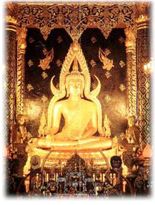
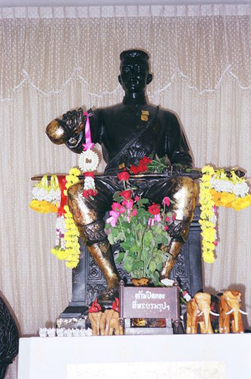

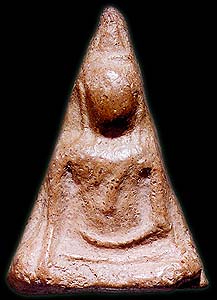
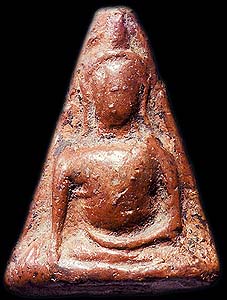
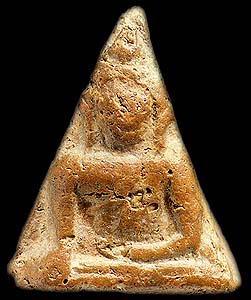
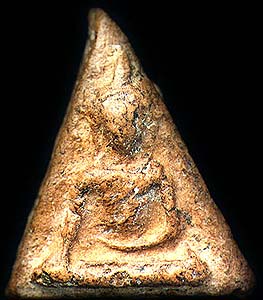
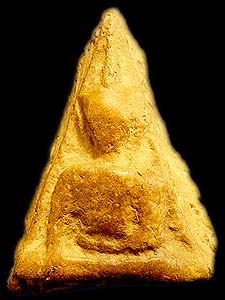
No comments:
Post a Comment